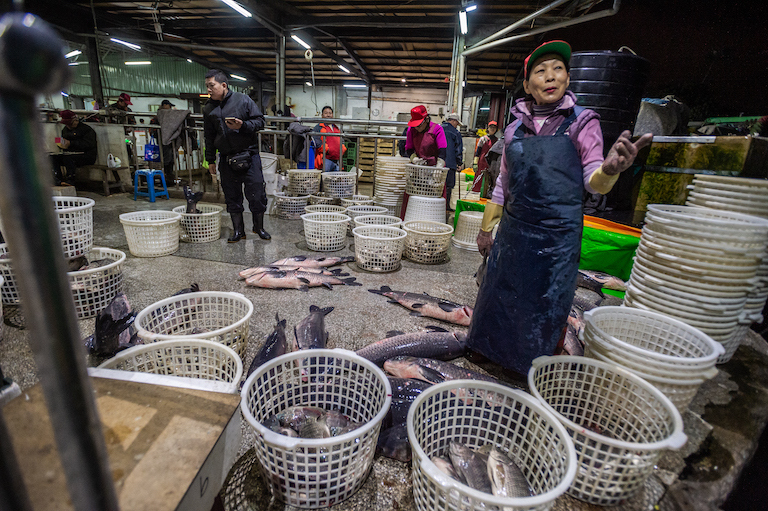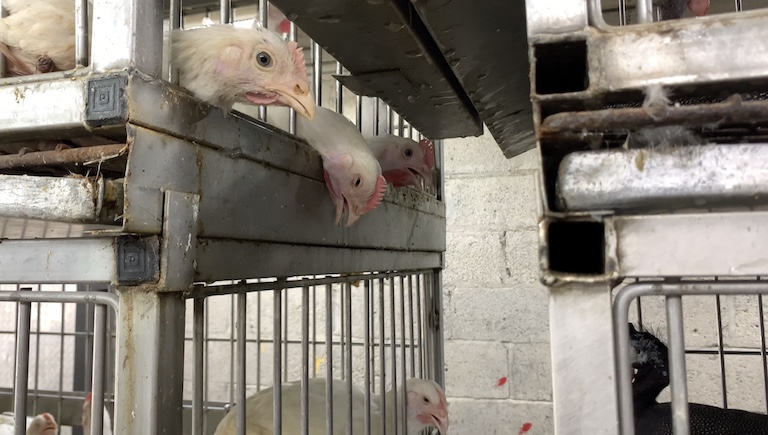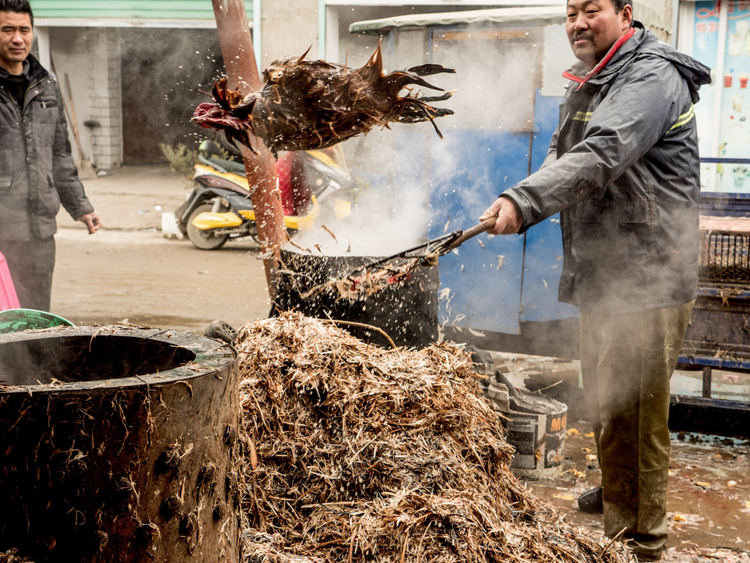- The term “wet market” is typically used to describe places in China and other Asian countries that sell fresh vegetables, fruits, seafood and meat from domesticated animals.
- Only a small minority of Asian wet markets sell wildlife, including illegally trafficked wildlife, although wet markets are unduly conflated with the wildlife trade, experts say.
- Wet markets, or their equivalents, are found in many places around the world, including the U.S.
- The World Health Organization (WHO) recently released new hygiene and sanitation guidelines for food markets around the world.
No one knows the exact origins of COVID-19, but the most agreed-upon story is this: a diseased animal, likely a pangolin, was slaughtered or consumed at the Huanan Seafood Wholefood Market, a so-called wet market in Wuhan, China, and the animal’s virus latched onto new human hosts.
Since then, wet markets have been a hot topic, and the term’s been used in countless think pieces on the topic. Experts and celebrities have also voiced their opposition to wet markets. Elizabeth Maruma Mrema, executive secretary of the U.N. Convention on Biological Diversity, called for a ban on wet markets to prevent future pandemics, and singer Paul McCartney recently referred to wet markets as “medieval.”
However, confusion reigns about the true meaning of a “wet market,” which is often conflated with a wildlife market, and experts say it’s important to set the record straight.

What exactly is a “wet market”?
A “wet market” describes a place that sells fresh fruit, vegetables, eggs and meat, often in an open-air setting. To provide the freshest food possible, vendors will keep food on ice, and butcher live animals like chickens and fish in front of customers.
The term “wet” might refer to the fact that perishables are being sold at these markets, or it could refer to the water that’s being sloshed around.
Kelly Guerin, a photographer and filmmaker at We Animals Media who’s visited about 15 wet markets in China, Taiwan and Thailand, says the markets are “aptly named.”
“It just seems like everything is dripping wet and splashing and spilling over, and bits of meat are being flipped from cleavers, and water’s being splashed from the chicken washing station, and feathers are steaming in a corner,” Guerin told Mongabay.

Some markets in China also sell dog and cat meat, according to Peter Li, China policy specialist at Humane Society International (HSI), although these markets tend to be in China’s south and southwest regions.
Other markets may sell items like phones, candy, and small gifts, blurring the line between a “wet market” and a “dry market,” Guerin said.
Do all wet markets sell wildlife?
No. The majority of wet markets in China and other Asian countries mainly sell vegetables, fruits, seafood and the meat of commonly farmed animals like chickens and pigs, according to Li.
“The traditional ‘wet market’ in China is for livestock,” Li told Mongabay in an email. “It was in the early 1980s that the wet market for wild animals started to join the marketplace. But, today, most marketplaces have a wet market for livestock, but not for wild animals.”

However, a small percentage of wet markets, like the infamous Huanan Seafood Wholefood Market, will also sell wild animals, including illegally trafficked species, although there’s a large degree of variation between markets.
“Sometimes wildlife may only be sold in the form of insects or wild-caught fish, while at other markets, birds, reptiles or mammals could be found,” Jan Schmidt-Burbach, global head of wildlife research and animal welfare at World Animal Protection (WAP), told Mongabay in an email. “Sometimes wildlife is sold in entirely independent markets as well, such as ‘bird markets’ in Indonesia, [and] do not sell any produce, but focus entirely on trading wild and domesticated animals.”
Since it is illegal to trade wild animals like pangolins, which are protected by CITES, the selling of these animals isn’t always done in the public eye.
“Wet market traders for wild animals tend to be more cautious,” said Li, who has visited about eight markets in China selling wildlife. “What is displayed at the wet market is generally captive-bred individuals.”

Despite the fact that many wet markets don’t sell wildlife, the term “wet market” tends to be used interchangeably with “wildlife market,” and this inaccuracy can lead to problems, Schmidt-Burbach said.
“There is a risk of unnecessarily branding the often essential wet markets that give local communities access to affordable fresh produce as bad places,” he said. “The focus of the discussion needs to be on wildlife markets, or more so on the trade of wild animals — in the end, it’s the trade of wild animals that poses a risk to public health and to animal welfare. For that, it’s irrelevant if the trade happens physically at a market or online, whether involving wild-caught animals or farmed wild animals, or whether it’s business-to-consumer or business-to-business trade.”
The wildlife trade has been banned in China since February, although wet markets selling fresh produce, seafood and meat from domesticated animals remain open.
Are wet markets only found in China?
Wet markets are found in many Asian countries besides China; Myanmar, Vietnam, Thailand, and Taiwan are just a few examples. However, wet markets — or their equivalents, such as farmer’s markets — are found in other places in the world, including the U.S.

In New York City alone, there are over 80 “storefront slaughterhouses” that function in a similar way to Asian wet markets, according to Jill Carnegie, co-organizer of Slaughter Free NYC.
“Anyone can walk in to find a dozen or more species of animals confined in cages and pens, usually over-crowded,” Carnegie told Mongabay. “The chickens and other poultry tend to come from nearby factory farms, and goats, sheep and cows come from animal auctions and farms in Pennsylvania. Then you select the weight you want from whichever types of animals, and the workers weigh them for you. You have the option to observe and approve the animals they’ve pulled. The animals are then slaughtered and processed on the spot and wrapped for you.”
While Slaughter Free NYC also utilizes the term “wet market” to refer to these stores, the label seems to most commonly refer to food markets in Asia.
Should wet markets be shut down?
There can be serious sanitation issues at some wet markets, and this led the World Health Organization (WHO) to announce new hygiene guidelines at global food markets to prevent future outbreaks of disease. Among animal welfare advocates, there is also a concern for animal suffering at these markets, particularly at ones that sell living animals.

However, Li points out that there are critical issues with all facilities, everywhere in the world, that trade and slaughter animals, whether it’s a marketplace, factory farm or a captive-breeding facility.
“It is not China or Chinese culture that is responsible for the outbreak of the pandemic — it was the mode of production in which a large number of animals, often of different species, [are] put together from captive facilities or the wild,” Li said. “Every country should take a look to see if it has concentrated animal feeding operations, [or] if it has wildlife trade … that can all be potential sources of danger.”
Banner image caption: Chickens for sale at a wet market in Anhui, China, in 2016. Image by Kelly Guerin / We Animals.
FEEDBACK: Use this form to send a message to the author of this post. If you want to post a public comment, you can do that at the bottom of the page.
